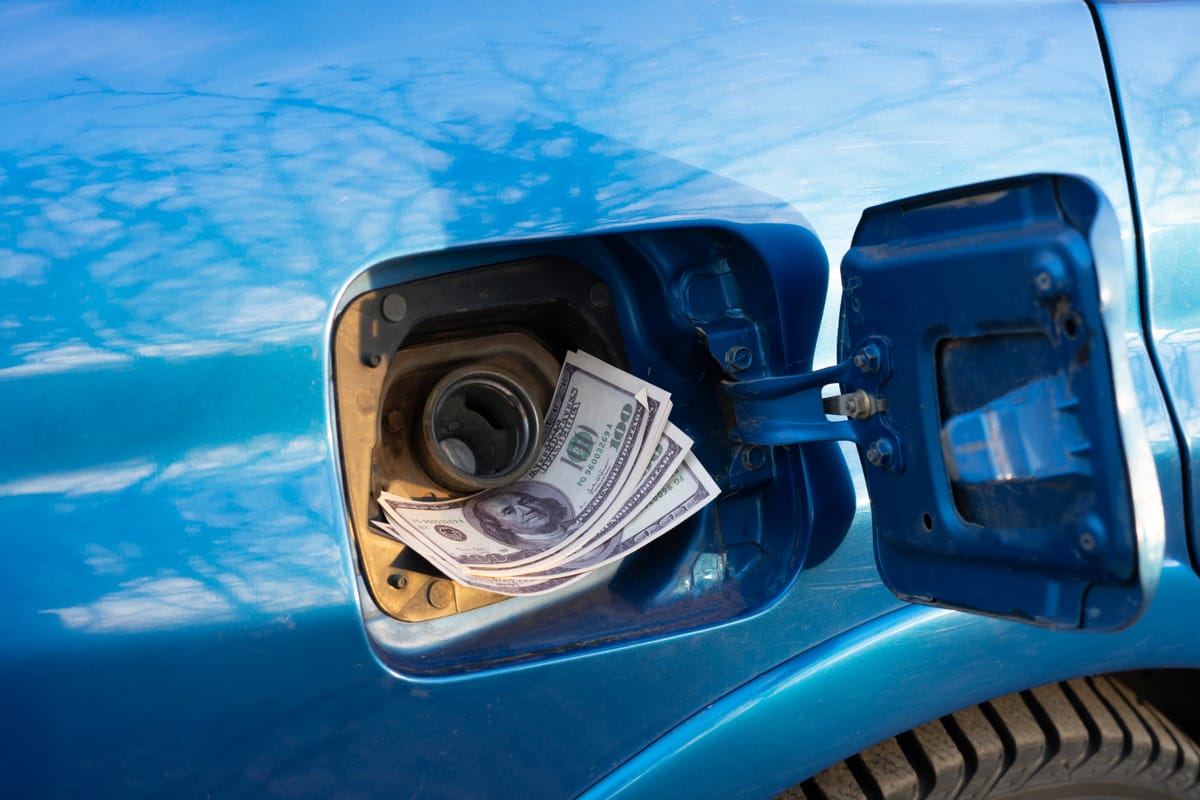How to Slash Your Fuel Bill in Kenya - Without Buying a New Car

Struggling with high fuel costs? You're not alone.
Whether you're a daily commuter stuck in Nairobi traffic, a Bolt or Uber driver, or you're hauling goods across Kenya in a Probox or van, fuel prices are hitting us all hard.
But here's the good news: You don’t have to upgrade to a hybrid (just yet) to cut your fuel costs. Here’s some simple Peach proven changes in how you drive and maintain your car that could save you thousands of shillings a month.
Real Talk: Why You’re Burning More Fuel Than You Should
Most of us blame fuel prices or old cars, but your driving habits matter more than you think. Aggressive driving in Nairobi’s stop-and-go traffic can increase fuel use by over 40%. That’s basically like pouring every second litre of fuel onto the tarmac.
Also:
- Driving at 120 km/h? You’re using 20% more fuel than if you kept it at 90.
- Tyres low on pressure? You’re burning 10% more fuel without even knowing it.
If you're serious about saving money - and not lining petrol station owners' pockets - these are the top fuel-saving hacks that actually work in Kenya.
1. Your Driving Habits = Your Fuel Bill
Most Kenyans blame their “fuel guzzler” when costs go up. But did you know aggressive driving can increase fuel use by 40%? Think quick starts, hard braking, and weaving in traffic.
Start tracking how much fuel your car really uses. Most drivers just fuel and go, but that’s how you leak money.
How to Calculate Fuel Consumption:
Fuel Consumption (L/100km) = (Litres Used × 100) ÷ Kilometres Travelled
Example: If you used 65L over 500km, your car is doing 13L/100km - and that’s pretty decent.
Things that mess with your fuel:
- Big engines + heavy cars = more fuel.
- Cold mornings in Limuru or altitude in Eldoret = your engine works harder.
- Bad roads + city traffic = stop-start hell.
- Neglected maintenance = your car fights itself to move.
Pro tip: Write down your odometer and litres filled each time you refuel. After a few tanks, you’ll know your real average. That’s power.
So, how do you reduce your fuel costs without buying a new car? Here are some proven techniques by Peach Cars that other drivers often miss.
- Accelerate like there’s hot tea on your dash. 0 - 20 km/h in 5 seconds is the sweet spot.
- Avoid hard braking. Look 200m ahead so you don’t slam the brakes. Smooth = savings.
- Stay steady. If you’re on the highway to Nakuru, keep a constant speed. Don’t yo-yo between 75–85 km/h. Your car uses 20% more fuel when speed changes between 75-85 km/h every 18 seconds. For commercial transporters, steady speeds mean less stress on the engine, even when traversing rough roads or steep inclines.
- Ditch idling. That Probox engine wastes 300ml of fuel every 10 minutes at idle. Multiply that by Nairobi traffic. Painful.
- Shift early (manual cars). High RPM = high costs. On hills, upshift early and gently.
- Take your foot off the pedal early. Let the car slow down naturally instead of hard braking.
“Driving like you’re late” might cost you more than just time - it’s costing you fuel.
2. Car Maintenance: The Unsung Hero of Fuel Efficiency = Money in Your Pocket
You wouldn’t run a marathon without training - so why expect your car to perform without upkeep? Forget mods and performance chips. Routine maintenance is your best fuel-saver.
- Keep your tyres properly inflated. Just 10 psi below recommended pressure increases consumption by 10% and saves up to 3.3% on fuel.
- Use the right engine oil (yes, it matters!). Correct oil cuts down friction = better mileage.
- Check your air filter. If you drive in dusty areas (hello Rongai), it clogs faster, making your engine work harder - especially for older cars with carburettors.
- Fix the small stuff. A faulty oxygen sensor or dirty spark plugs could be quietly eating up 20 - 40% more fuel.
- Reduce unnecessary weight as much as possible. Commercial transporters often overload vehicles (Probox guys, hello!), increasing fuel use by 5–10%. Remove non-essential items – every 50kg added costs 2% more fuel. Even the weight of fuel counts—since each litre weighs about 800g, a half-full tank makes your car noticeably lighter than a full one.
- Keep your engine properly tuned to get the best performance. Your fuel mileage can improve by about 4% just by fixing an engine that's clearly out of tune or failing emissions tests. On top of that, it could jump up to 40% if you fix problems like a bad oxygen sensor.
Pro tip: Don’t wait for a breakdown. A quick check every 2 - 3 months can save you thousands annually.
3. Planning: Your Secret Weapon to Cut Fuel Use
Smart planning = fewer kilometers = less fuel.
- Use Google Maps’ eco-routes to find smoother, flatter routes with less braking.
- Batch your errands into one trip - less driving, more saving.
- Drive during off-peak hours when you can. Early morning and late evening beats sitting in fuel-guzzling jams (we know this one’s hard in Nairobi - lakini jaribu tu).
- Stagger your work hours if you can - avoiding that 7–9am fuel-wasting crawl.
Remember: The best route isn’t always the shortest - it’s the one with the least stop-and-go.
Want Real Fuel Savings? Time to Upgrade
Even with perfect habits, some cars just drink fuel for fun. That’s where Peach Cars comes in.
We help you switch from fuel-guzzlers to fuel-savers - safely, easily, and with no hassle.
- Want to see how much your car is worth? Come on down to one of our branches and let’s do a quick free pre-screening.
- Looking for something smarter? Browse our inspected, fuel-efficient cars like the Toyota Aqua (35.4 km/L) or Honda Fit Hybrid - perfect for Kenyan roads.
Whatever route you take, Peach Cars is here to help you save.




